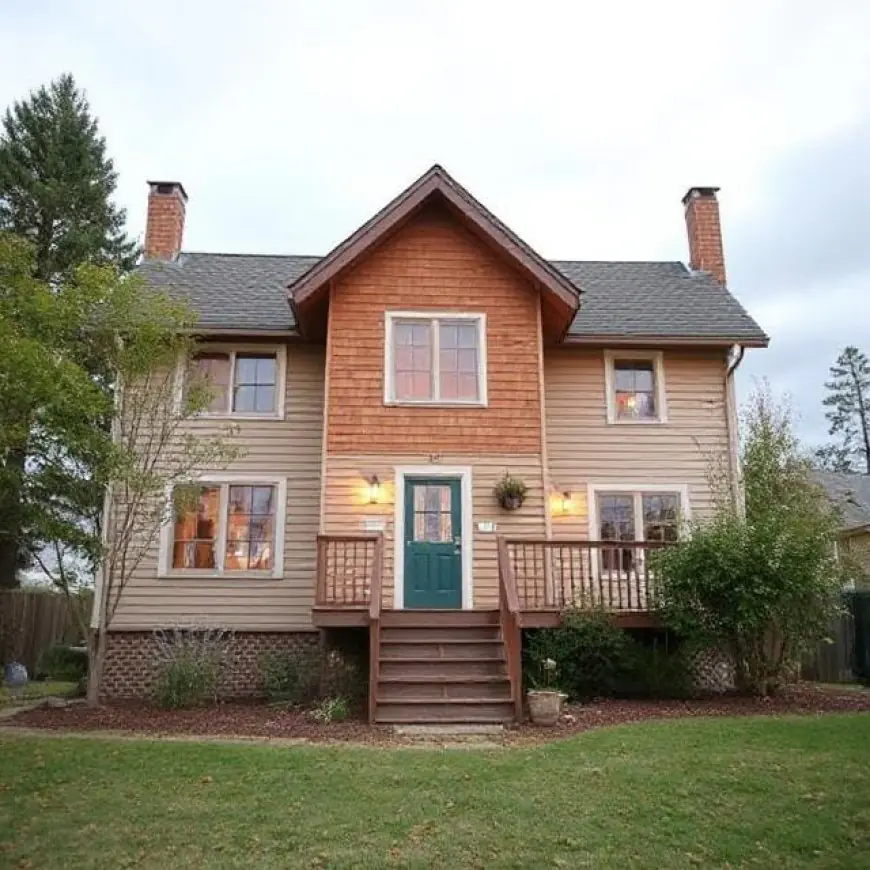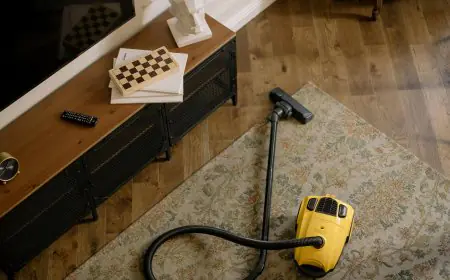Managing Your Home Renovation Budget: Tips for Staying on Track
A home renovation can be one of the most exciting yet challenging projects you’ll tackle.

There’s the thrill of creating your dream space, but with that comes the not-so-glamorous task of sticking to a budget—a task many homeowners underestimate. Without a well-defined financial plan, it’s all too easy to overspend and end up stressed about costs rather than enjoying your new space.
If you’ve been daydreaming about upgrading your kitchen, overhauling your bathroom, or adding fresh charm to your living space, this guide will help you take control of your renovation budget.
By the end, you’ll feel fully prepared to renovate with confidence and avoid unexpected financial surprises.
Setting the Foundation
Defining the Scope
Start your renovation with a detailed scope of work—it will serve as your roadmap throughout the project. This means clearly identifying what you want to renovate, down to the nitty-gritty details. For instance, are you updating the fixtures in your bathroom or gutting the entire room?
Here’s how to get started effectively:
-
Room-by-Room Breakdown: Create a list of tasks for each area you plan to renovate. For example, for a kitchen remodel, your list might include new countertops, cabinets, lighting, and flooring.
-
Visual Aids: Whether it’s a Pinterest board, mood board, or sketches, having a visual representation of your ideas helps clarify your vision. This will also help convey your ideas to contractors or designers.
We reached out to the experts at Remodeling Contractors Loveland CO and discovered a crucial tip: Setting clear boundaries from the start can help prevent your project from growing into a larger, more expensive undertaking.
Setting Realistic Expectations
While it’s tempting to aim for luxury materials and high-end finishes, those options may not align with your budget. It’s vital to prioritize your needs versus your wants from the start. For example:
-
Needs: Fixing leaks, updating old appliances, or replacing damaged flooring.
-
Wants: Fancy backsplash tiles, designer light fixtures, or custom cabinetry.
If your budget feels tight, don’t be afraid to phase your renovations. Complete the most critical tasks first and schedule non-urgent upgrades for later when finances allow.
Creating Your Renovation Budget: A Step-by-Step Guide
Detailed Cost Breakdown
To craft a realistic budget, list every possible expense you might encounter. Missing even small items can lead to major headaches later.
Use this checklist as a starting point:
-
Materials: Tiles, paint, hardware, trim, etc.
-
Labor Costs: Contractor fees, electrician/plumber charges, etc.
-
Permits: Don’t forget permit costs for structural changes or electrical and plumbing work.
-
Demolition and Disposal: Budget for tearing down walls, removing debris, and hauling waste.
-
Surprise Costs: Aging wiring, hidden mold, or structural issues can crop up unexpectedly.
For added clarity, create a cost spreadsheet with category columns like materials, labor, and miscellaneous expenses. Including columns for your estimated cost versus actual cost will help you track everything in real time.
Example:
For a small kitchen renovation in today’s market, here’s a rough breakdown of costs:
-
Materials: $5,000 (e.g., cabinets: $2,500, tiles: $500, countertops: $1,000, paint: $200, hardware: $800)
-
Labor Costs: $4,000 (e.g., contractor: $3,000, electrician: $500, plumber: $500)
-
Permits: $500
-
Demolition and Disposal: $700
-
Surprise Costs: $1,000 (to cover unexpected issues like wiring or mold)
Total Estimated Budget: $11,200
Include a Contingency Fund
The golden rule of renovation budgeting? Always expect the unexpected.
A contingency fund, which is typically 10-20% of your total budget, acts as your financial safety net. This could cover surprises like damaged plumbing or price hikes in materials.
Pro Tip: Avoid treating your contingency as “extra” spending money. It’s there to protect you from unexpected expenses, not to splurge on a luxurious upgrade.
Prioritizing and Value Engineering
If your initial scope feels too expensive, it’s time to prioritize. Think critically about your must-haves versus nice-to-haves.
-
Value Engineering Tip: Consider more economical alternatives that don’t compromise quality—like laminate flooring that mimics hardwood or semi-custom cabinetry instead of fully custom builds. Small changes like these can make a big difference.
Tracking Expenses and Staying on Budget
Use an Expense Tracking System
A renovation budget is only as good as your ability to keep track of it. Choose an expense tracking system that keeps things simple, whether it’s an app, a dedicated budgeting spreadsheet, or project management software.
Fun Fact:
Many budgeting apps allow you to categorize expenses, set budget limits, and get alerts when you’re getting close to overspending. Tools like Mint or HomeZada are a great starting point.
Tracking expenses on spot will help you identify overspending before it snowballs into a significant issue. Remember, even the smallest expenses—like screws, nails, or extra paint rollers—shouldn’t go unrecorded.
Schedule Regular Budget Reviews
Plan periodic check-ins to review your budget. Sit down with your contractor, significant other, or project manager to assess where your money is going. These reviews will also highlight areas where you might need to adjust or tighten the budget.
Communicate with Contractors
Clear communication is key to keeping unexpected costs in check. Before approving any changes to your plan, ask your contractor for written cost updates. A transparent process ensures you don’t get blindsided.
Overcoming Unexpected Costs and Challenges
Common Unexpected Costs
Even with careful planning, surprises happen:
-
Hidden Issues: Think moldy drywall, outdated wiring, or unlevel flooring.
-
Price Hikes: Material costs can suddenly increase due to market demand.
-
Permit Delays: Project halts can lead to paying more for labor if contractors need to reschedule.
Anticipating these costs won’t eliminate them but will mitigate their impact.
Making Adjustments
If an unexpected cost pushes you over budget, stay flexible. Here are strategies to get back on track:
-
DIY Tasks: Painting, tiling backsplashes, or assembling furniture can reduce labor costs.
-
Resequence Your Project: Delay or remove less critical tasks to tackle them later.
Long-Term Financial Considerations
While sticking to your renovation budget is important, don’t lose sight of the long-term financial picture.
Return on Investment (ROI)
Certain projects, like kitchen remodels or bathroom upgrades, can increase your home’s value significantly. Look at renovations as an investment in your property. Prioritize those that offer the highest potential ROI.
Financing Options
If your project needs additional funding, evaluate options like home equity loans or personal loans. Just be sure to fully understand the repayment terms and interest rates before signing up. If you’re considering this route, having a good credit score is essential to qualifying for better loan terms and lower interest rates. If not, consider a reliable credit repair service first to help you on this part.
Lenders use your credit score to assess your reliability, so a higher score can give you access to more favorable options. Take time to review your credit report, address any inaccuracies, and work on improving your score if needed. A strong credit profile can save you money and make the loan process smoother.
Bring Your Renovation Dreams to Life
A well-budgeted renovation doesn’t just save you money—it saves you stress and keeps your project on track. By setting a detailed scope, prioritizing needs, tracking expenses, and staying flexible when challenges arise, you give yourself the best chance of success.
Remember, with the right planning and tools, your dream renovation can become a reality—without turning into a financial nightmare.
Start your project with these tips, and watch your dream home come to life piece by piece!
What's Your Reaction?





















































































